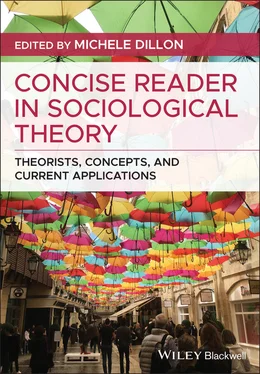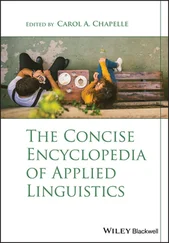1A Karl Marx from Wage Labour and Capital
Original publication details: Karl Marx, fromWage Labour and Capital (1891/1978). Lawrence & Wishart, 2010, pp. 17–18, 19–21, 27–29, 29–30, 41. Reproduced with permission of Lawrence & Wishart via PLS Clear.
What are wages? How are they determined?
If workers were asked: “What are your wages?” one would reply: “I get a franc 1 a day from my bourgeois”; another, “I get two francs,” and so on. According to the different trades to which they belong, they would mention different sums of money which they receive from their respective bourgeios for a particular labour time 2 or for the performance of a particular piece of work, for example, weaving a yard of linen or type‐setting a printed sheet. In spite of the variety of their statements, they would all agree on one point: wages are the sum of money paid by the bourgeois 3 for a particular labour time or for a particular output of labour.
The bourgeois, 4 therefore, buys their labour with money. They sell him their labour for money. 5 For the same sum with which the bourgeois has bought their labour, 6 for example, two francs, he could have bought two pounds of sugar or a definite amount of any other commodity. The two francs, with which he bought two pounds of sugar, are the price of the two pounds of sugar. The two francs, with which he bought twelve hours’ labour, 7 are the price of twelve hours’ labour. Labour, 8 therefore, is a commodity, neither more nor less than sugar. The former is measured by the clock, the latter by the scales.
[ …]
Wages are, therefore, not the worker’s share in the commodity produced by him. Wages are the part of already existing commodities with which the capitalist buys a definite amount of productive labour as such . 9
Labour 10 is, therefore, a commodity which its possessor, the wage‐worker, sells to capital. Why does he sell it? In order to live.
But, 11 labour is the worker’s own life‐activity, the manifestation of his own life. And this life‐activity he sells to another person in order to secure the necessary means of subsistence . Thus his life‐activity is for him only a means to enable him to exist. He works in order to live. He does not even reckon labour as part of his life, it is rather a sacrifice of his life. It is a commodity which he has made over to another. Hence, also, the product of his activity is not the object of his activity. What he produces for himself is not the silk that he weaves, not the gold that he draws from the mine, not the palace that he builds. What he produces for himself is wages , and silk, gold, palace resolve themselves for him into a definite quantity of the means of subsistence, perhaps into a cotton jacket, some copper coins and a lodging in a cellar. And the worker, who for twelve hours weaves, spins, drills, turns, builds, shovels, breaks stones, carries loads, etc. – does he consider this twelve hours’ weaving, spinning, drilling, turning, building, shovelling, stone‐breaking as a manifestation of his life, as life? On the contrary, life begins for him where this activity ceases, at table, in the public house, in bed. The twelve hours’ labour, on the other hand, has no meaning for him as weaving, spinning, drilling, etc., but as earnings , which bring him to the table, to the public house, into bed. If the silkworm were to spin in order to continue its existence as a caterpillar, it would be a complete wage‐worker.
Labour 12 was not always a commodity . Labour was not always wage labour, that is, free labour. The slave did not sell his labour 13 to the slave owner, any more than the ox sells its services to the peasant. The slave, together with his labour, 14 is sold once and for all to his owner. He is a commodity which can pass from the hand of one owner to that of another. He is himself a commodity, but the labour 15 is not his commodity. The serf sells only a part of his labour. 16 He does not receive a wage from the owner of the land; rather the owner of the land receives a tribute from him. The serf belongs to the land and turns over to the owner of the land the fruits thereof. The free labourer , on the other hand, sells himself and, indeed, sells himself piecemeal. He auctions off eight, ten, twelve, fifteen hours of his life, day after day, to the highest bidder, to the owner of the raw materials, instruments of labour and means of subsistence, that is, to the capitalist. The worker belongs neither to an owner nor to the land, but eight, ten, twelve, fifteen hours of his daily life belong to him who buys them. The worker leaves the capitalist to whom he hires himself whenever he likes, and the capitalist discharges him whenever he thinks fit, as soon as he no longer gets any profit out of him, or not the anticipated profit. But the worker, whose sole source of livelihood is the sale of his labour, 17 cannot leave the whole class of purchasers, that is, the capitalist class , without renouncing his existence. He belongs not to this or that capitalist but to the capitalist class , 18 and, moreover, it is his business to dispose of himself, that is, to find a purchaser within this bourgeois class. 19
[…]
Now, the same general laws that regulate the price of commodities in general of course also regulate wages , the price of labour .
Wages will rise and fall according to the relation of demand and supply, according to the turn taken by the competition between the buyers of labour, the capitalists, and the sellers of labour, 20 the workers. The fluctuations in wages correspond in general to the fluctuations in prices and commodities. Within the fluctuations, however, the price of labour will be determined by the cost of production, by the labour time necessary to produce this commodity – labour . 21
What, then, is the cost of production of labour? 22
It is the cost required for maintaining the worker as a worker and for developing him into a worker .
The less the period of training, therefore, that any work requires, the smaller is the cost of production of the worker and the lower is the price of his labour, his wages. In those branches of industry in which hardly any period of apprenticeship is required and where the mere bodily existence of the worker suffices, the cost necessary for his production is almost confined to the commodities necessary for keeping him alive. 23 The price of his labour will, therefore, be determined by the price of the necessary means of subsistence .
Another consideration, however, also comes in.
The manufacturer in calculating his cost of production and, accordingly, the price of the products takes into account the wear and tear of the instruments of labour. If, for example, a machine costs him 1,000 francs and wears out in ten years, he adds 100 francs annually to the price of the commodities so as to be able to replace the worn‐out machine by a new one at the end of ten years. In the same way, in calculating the cost of production of simple labour, 24 there must be included the cost of reproduction, whereby the race of workers is enabled to multiply and to replace worn‐out workers by new ones. Thus the depreciation of the worker is taken into account in the same way as the depreciation of the machine.
The cost of production of simple labour, therefore, amounts to the cost of existence and reproduction of the worker . The price of this cost of existence and reproduction constitutes wages. Wages so determined are called the wage minimum . This wage minimum, like the determination of the price of commodities by the cost of production in general, does not hold good for the single individual but for the species . Individual workers, millions of workers, do not get enough to be able to exist and reproduce themselves; but the wages of the whole working class level down, within their fluctuations, to this minimum.
Читать дальше












